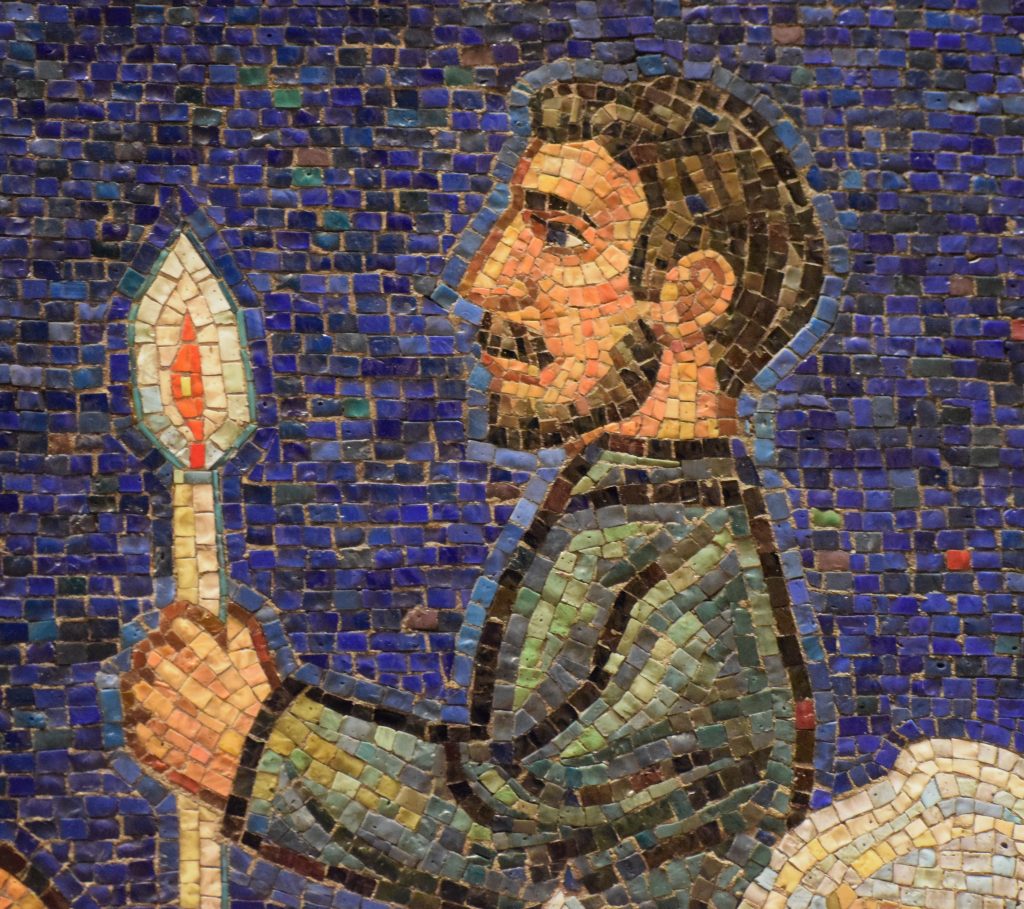
This summer, we’re celebrating how the Basilica honors the different cultures, peoples, and traditions that are the fabric of the Catholic faith in the United States. In this series, we share the stories of some of the saints of America – many of whom came from far-off lands to share the Gospel and make their home in the United States. Each story forms a unique and beautiful piece of the mosaic of American Catholicism.
This post is Part II in a series. View Part I.

Saint Isaac Jogues
Born in 1607, St. Isaac Jogues was one of the earliest missionaries to New France. After being ordained as a Jesuit priest in 1636, he traveled to the continent to minister to the native Americans. Though the initial years of his service were relatively uneventful, in 1641 the Iroquois whipped and tormented Isaac and his fellow missionaries. This torture continued for a year, as Isaac witnessed the brutal killing of his fellow missionaries during their captivity. And yet, the continuous threat of pain and emotional distress did not stop Isaac from evangelizing to the Iroquois. He even baptized some of them before he escaped aboard a Dutch ship to France. While others would have quavered at the prospect of returning to their tormentors, Isaac found he could not stop thinking about how the Iroquois needed the Gospel. Knowing that a second mission would likely be a death sentence, Isaac returned merely months later, offering these parting words;
“My heart tells me that, if I am the one to be sent on this mission, I shall go but I shall not return. But I would be happy if our Lord wished to complete the sacrifice where he began it.”
In 1646, he was murdered with a tomahawk. St. Isaac is patron saint of Canada and the Americas, and is portrayed in the Basilica in the west façade, the Our Lady of Guadalupe Chapel, and the Second Coming mosaic.

Saint Katharine Drexel
Saint Katharine Drexel was the second American-born saint to be canonized and is known for her commitment to racial justice and her educational efforts for minority groups in America. Katharine was born into an affluent Philadelphia banking family in 1858. During her family’s travels across the western United States, Katharine was struck by the poor living conditions endured by Native Americans on reservations. She decided to use her inheritance to establish the Sisters of the Blessed Sacrament in 1913. She was a tireless advocate for minorities, crusading for better educational opportunities and standing against racial discrimination and injustice. In 1894, she opened the first mission school for Native Americans in New Mexico, and in 1915, she founded Xavier University, an institution of higher learning for African Americans in New Orleans.
By the start of World War II, she had founded schools for African Americans in 13 states, and 50 schools for Native Americans in 16 states. Katharine lived to be 97, and was canonized in 2000. She is the patroness of racial justice and philanthropists, and is portrayed in the Hall of American Saints, the Trinity Dome, and the Crypt Church sacristy.

St. Frances Xavier Cabrini
In 1946, Saint Frances Xavier Cabrini, the “mother of women’s missions,” became the first American citizen to be canonized. As a young girl in Italy, she would dress her dolls as nuns and send them down the river in boats as “missionaries.” What made this dream even more extraordinary is that during this period, the Church had no female missionaries. But Frances changed that; when she grew up, she began the first institute for female missionaries: the Missionary Sisters of the Sacred Heart. Within a decade, it was recognized by Rome. At age 30, she immigrated to New York City and founded orphanages in Little Italy, caring for over 400 orphans rescued from the city streets.
The Missionary Sisters of the Sacred Heart later established a variety of Catholic institutions throughout Europe and the Americas. In her lifetime, Frances traversed the ocean 39 times, founding over 60 missions across Europe and the Americas. She is the patroness of immigrants and is portrayed in the Basilica in the west portico, the Guadalupe Chapel, the Trinity Dome mosaic, and in a sculpture in the Hall of American Saints.
Sources:
American Saints and Blesseds, USCCB
Butler’s Lives of Saints, ed. Bernard Bangley
The Way of Saints, Dr. Tom Cowan

